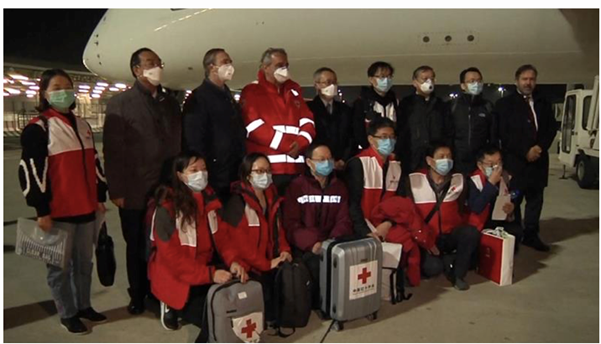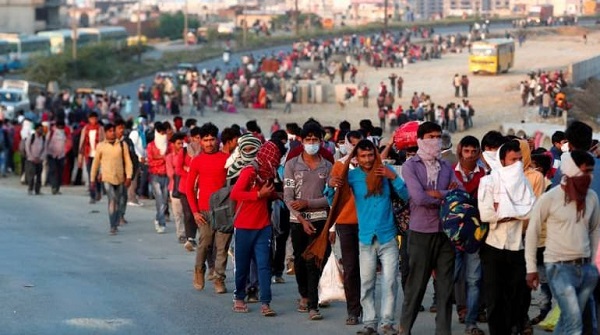Reena Bhatiya, Research Assistant, ICS
The debates on Sino-India border dispute largely fall within the strategic affairs and geopolitical framework of international relations. This book approaches the subject of border dispute by looking at the debates on linear borders, local perspectives on the border conflict as an alternative to a state-centric view. The authors examine the historical evidence of China’s claim over Arunachal Pradesh while investigating the dynamics of territorial politics. The book is structured into three broad themes: the geopolitical aspects of the conflict, the local community’s spatial history before linear borders, their infrastructure development needs and perspectives on the dispute.
Discussing the boundary question, C.V. Ranganathan looks at the rivalry through the prism of changing geopolitical situations while suggesting India for a multilateral architecture in the South Asian region. Srikanth Kondapalli’s chapter yields a persuasive insight into India’s engagement with China on multiple fronts to prevent any change in the configuration of power in the region. This implies that India should not let China become an extra-regional power in South Asia. In the fifth chapter, Jabin Jacob advances the argument that a mixed strategy of combining the local aspirations of Arunachal Pradesh for peaceful and sustainable development with the national security considerations can best fulfill the demand for ‘first line of defense’ to deter China’s ‘new forward policy’. However, he has not dealt in sufficient depth the ways of deepening the democratic spirit and how communities could be engaged in the decision-making processes. These scholars primarily focus on different ways of India’s engagement with China. But the limitation lies in the fact that they reify the state-centric view of the dispute thus drifting away from the main aim of the book.
The strength of the book lies in unpacking local histories of borderland spaces in this region and local community perception of the conflict thereby giving a more nuanced understanding of the territoriality of these regions. For instance, Namrata Goswami looks at the border dispute through the local community’s point of view. She argues that the Lamas vindicated Tawang Monastery’s historical ties with the Lhasa monastery. And, the Adi, Nishi, Apataani communities do not approve of China’s claim on Arunachal Pradesh. She emphasizes the need to meet the demands of the development of these communities to improve the democratic structure and infrastructure conditions in the region.
On the other hand, J.R. Mukherjee briefly surveys the Tibetan folklores to question China’s claims over Arunachal Pradesh to highlight that the tribal people of Arunachal Pradesh were never the subjects of Tibet and only had cultural and commercial links. He notes that the ancient pilgrimage route of Takpasiri Mountain in the Subansiri Valley holy to the Tibetans, Monpas, and Tagians of Arunachal Pradesh, is claimed by China.
Further expanding the discussion on local communities, Gomar Basar attempts to understand the Chinese claim in Arunachal Pradesh through a historical analysis of the local dynamics. He traces the historical trajectory of the hill tribes of Arunachal Pradesh from the colonial period and notes that the British ambition to exercise an indirect control over the tribal areas through drawing inner and outer lines led to Chinese intrusions within the outer line area. These intrusions were contested at the time by the Mishmi community inhabiting the outer line as they already considered themselves British subjects.
Adding to the discussion on linear borders, H. Srikant cautions against “nationalist myopia” on the border dispute and considers linear borders as a colonial baggage. Although he argues that the linear borders overlooked the traditional boundaries of the native communities and kingdoms, but he fails to provide a detailed account of the local traditional boundaries. In addition, he suggests that history, geographical realities, administrative, economic activities, customs, language, etc. that generates deep-rooted sentiments and emotions in the region should be taken into consideration while negotiating border issues.
Through his detailed discussion of the pre-modern kingdoms in eastern sector, Mathew Alkester argues that Moyul (present-day Bhutan) belonged to the Tibetan world not Loyul (present-day Arunachal Pradesh). He, thereby, debunks the Chinese claim that Arunachal Pradesh was under Tibet’s control. The main contention of the essay is that cultural and commercial links of these kingdoms with the Tibetan world do not confirm Tibetan political control over them.
Overall, the unbundling of the complex local histories of the frontier region in these chapters could have been coupled with a discussion on the present concerns of the local communities regarding infrastructure demands and preparedness to be able to participate in the gains from any large development projects in their region. An overview of the traditional knowledge systems and community institutions of the Mishmi could prescribe ways to democratically engage them in decision-making processes.
The last section of the book leaves the reader with C Joshua Thomas’s questions on China’s claim over Arunachal Pradesh. a). Did Tibet ever claim Arunachal Pradesh as her part? b). Tibet had ceded the Tawang tract to British India by signing the Shimla accord in 1914 d). Why would the world accept Chinese historiography and refute the Tibetan historiography? The author observes that systemic misunderstanding is a major issue in Sino-Indian relations therefore to prevent India’s hedging; China must come to terms with India.
Largely, this book provides a good overview of the historical and political aspects of the border dispute in the eastern sector and gives the much-needed perspective of the local communities on the dispute and the territorial dynamics of the region. All the chapters display a firm grip over understanding the specifics of the dispute with the larger logics of international politics, but a notable kind of perplexity surfaces over an analytical framework to the issue of border disputes. Although informative, its limitation lies in the lack of a theoretical base while looking into the concept of ‘territoriality’ in international politics. An absence of the theoretical discussion on the notion of territoriality puts this discussion in a vacuum. However, the book paves the way for researchers to develop upon the information provided here and engage with it theoretically, and thus becomes an important contribution to the studies on border issues with China.

